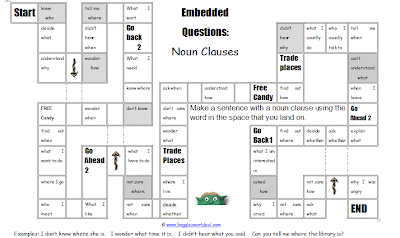Causative verbs indicates sort of actions that people do not do themselves but allow, ask, or force other people to do.
Causative verbs: this website has different and very fun activities. It can used from primary up to secondary level.
Here is an easy practice for students to review the simple past and simple present using causative verbs.
Fill in the blanks with the suitable tense of the verbs in the box
| Develop clean (x2) open repair(x3) shorten pay deliver(x3) take(2) fix send(x3) fill Write(x3) |
1. If were the President I wouldn´t have the citizens_______ such high taxes
I never get my pictures________at a lab I do it myself
She has a cleaning woman________her house twice a week
I’m going to have my skirts________They’re too long
I´ll have my invitations___________ by the secretary
Jane had three teeth____________
The teacher had the students___________ a composition
I had the TV____________but it is broken again
I couldn´t get a mechanic__________ my car for the weekend, I had to rent one
I couldn´t have a mechanic__________ my car for the weekend,I had to rent one
I will have the children _________ their rooms before they go.
They need a copy of the report, so I will have the courier__________ it as soon as possible
They need a copy of the report, so I will have it________ by a courier as soon as possible
I got my suitcases__________ at the airport
This winter is so cold that I will have a new central________ heating
I would have some roses_________ to her if I had the money
You should have had it__________ a long time ago (They need the information urgently)
She had her secretary__________ the speech
She had her speech__________ by her secretar
I always have my shopping_____________











